#19th c. France
Text
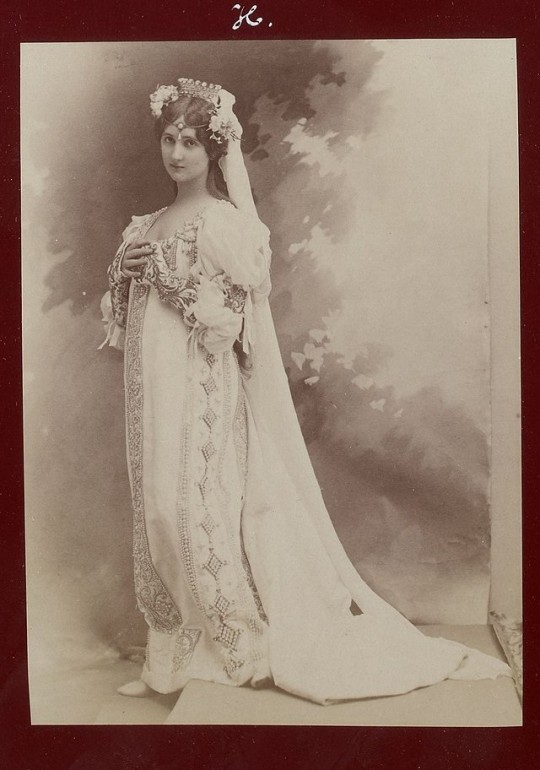



Catherine Mastio as Hero in play "Much ado about nothing" at Opera Comique, 1899; Photograph by Leopold Emile Reutlinger
#stage costume#mdptheatre#photography#france#19th c. france#19th century#opera#headdress#leopold emile Reutlinger
450 notes
·
View notes
Text

Empire dress with short balloon sleeves
c. 1800-1810, Napoleonic era
Musée des Tissus, Lyon, France
#dress#empire#empire style#paisley#baloon sleeves#19th century#early 19th century#napoleonic era#first french empire#napoleonic#french empire#napoleon#france#peach#C. Jolivet et à Joseph-Benoît Richard#Lyon#French#French fashion#fashion history#history of fashion#historical fashion#1800s#1800s fashion#empire dress#regency#regency fashion#regency era#fashion#gown#pretty
39 notes
·
View notes
Text
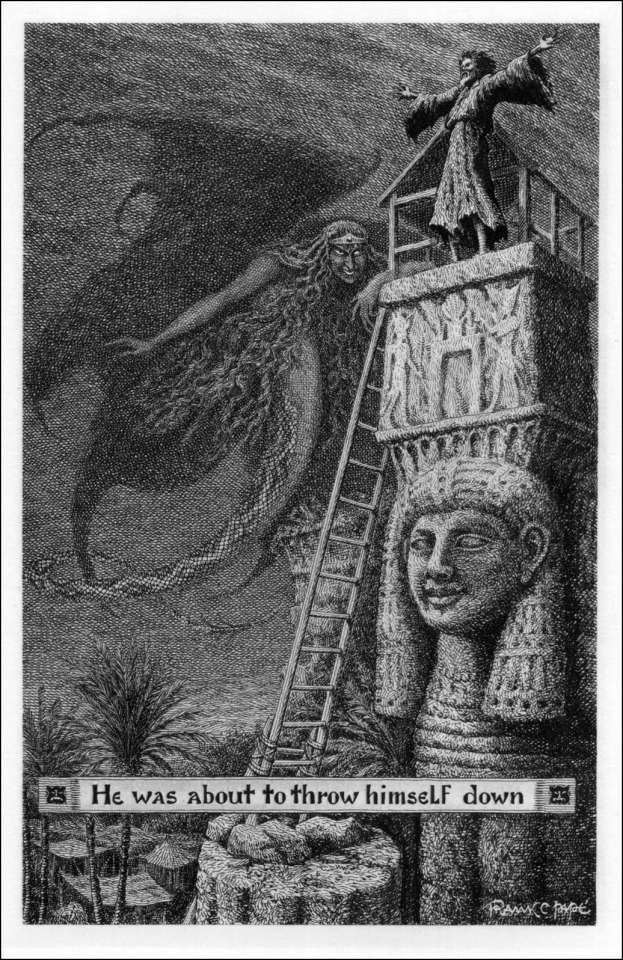

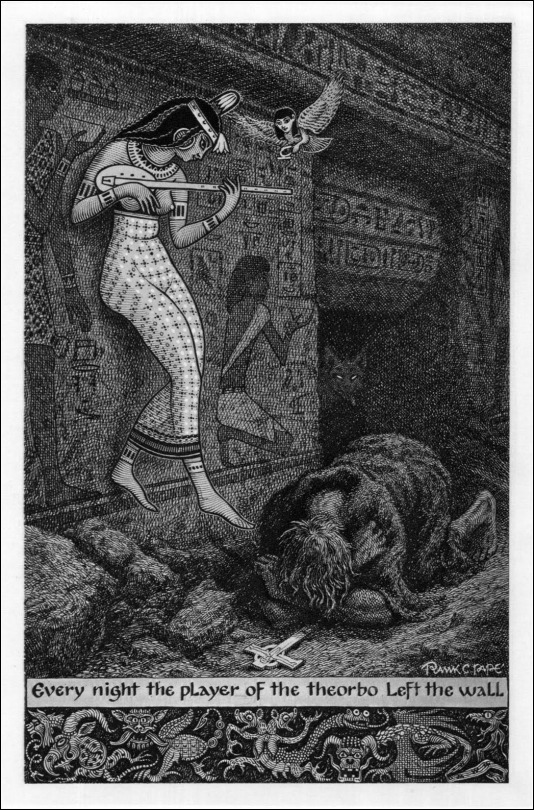


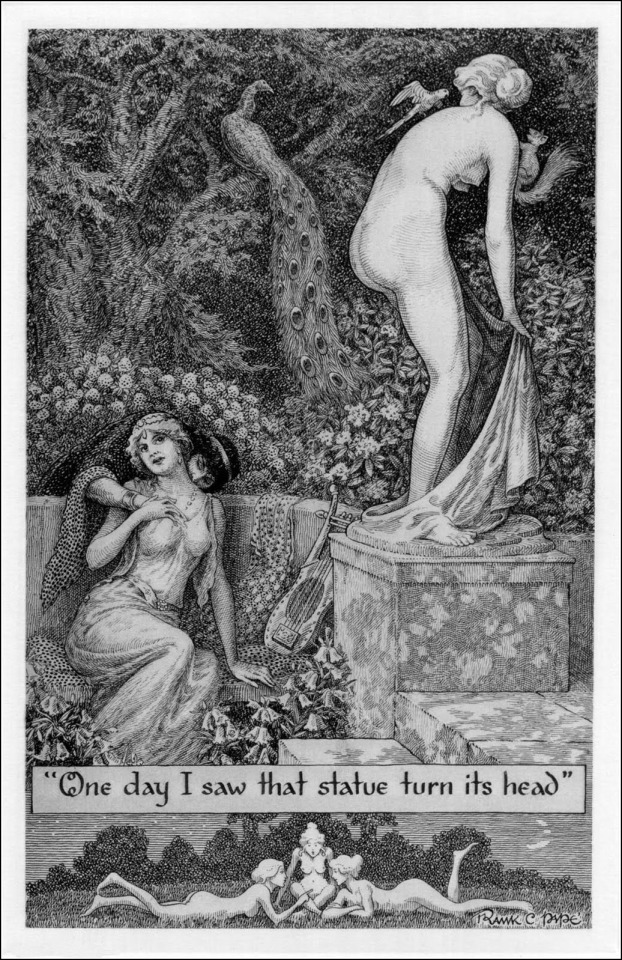
Anatole FRANCE. Thaïs.
London: John Lane The Bodley Head, 1926.
Illustrated by Frank C. Pape.
Source
#Frank C. Pape#Frank Pape#Anatole France#1926#1920s#weird#illustration#ancient#Thaïs#1890#19th century#literature#Christianity#religion#occult#occult underground#demon#devil#satan#temptation#hagiography#hermit#Egypt#ancient Egypt
13 notes
·
View notes
Text
Caraco
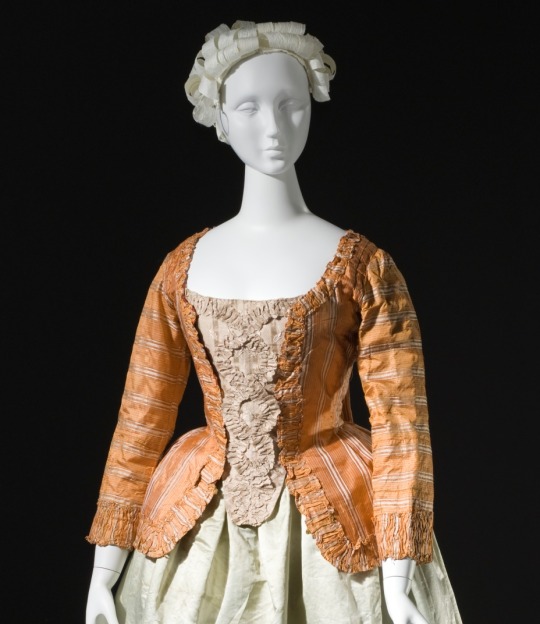
A style of woman’s jacket that was fashionable from the mid-18th to early 19th centuries. Caracos were thigh-length and opened in front, with tight three-quarter sleeves or long sleeves. Like gowns of the period, the back of the caraco could be fitted to the waist or could hang in pleats from the shoulder in the style of the robe à la française. The caraco emerged as an informal style in France in the 1760s, based on working-class jackets. It was worn with a petticoat and, if open in the front, a stomacher or decorative stays. The English caraco was generally closed in the front. A similar garment with a wrap front, called a bedgown was the standard working woman’s costume of the later 18th century.
13 notes
·
View notes
Text

TODAYS CHARACTER WHO HATES HAUSSMANIZATION IS: Sonic
1 note
·
View note
Note
"Betray him first, and the game’s reversed!"
@covrroucer || thank you!
Her eyes flickered from Armand's face to pick out that of her pimp's beyond the shadows of the night. Every now and then the moon rewarded her with colour, but it was never more than rouged cheeks of working women or the rare glimpse of expensive fabrics of more notable clients.
"I don't know what games you play, Monsieur, nor the circles you run in, but betrayal doesn't go down too well in these parts."
They played a game every single day— these women were all looking to out-do the other, willing to climb over each other to potentially escape whatever this existence was. Yet should one of their own rock the boat, cause ripples in the comfort of their pond, vultures became hounds.
"But you speak with an air of an experience, so please humour me... were you also successful?"
#covrroucer#c; armand chauvelin#v; undetermined#answered ask#thank you!#fantine... a woman in 19th century france...#she doesn't think betrayal would end too well for her tbh#especially when honesty never did looool
1 note
·
View note
Note
apologies if you've received an ask about this / have made a post about it before (when i tried to search it up on your blog i first accidentally pasted in the entirety of my speech, but the second time i got it right and the only thing that showed up was the ask you answered about why healthcare is the way it is), but i'm very interested in learning about military medicine, specifically about its role in, as you said in the aforementioned ask, the creation of the hospital/clinic system—do you have any specific readings that would be a good introduction to it?
yes, although i should've phrased that more precisely: the first anon was asking about the current US medical system, and my argument is that a lot of what's characteristically "fascist" (as they put it) about it has throughlines to medical knowledge transfer in the 19th-century Atlantic world, & particularly the influence of what is (sort of incorrectly) termed 'Paris medicine'. so, this is not a universal claim about hospitals (eg, there's lots of scholarship on hospital medicine in the Ottoman Empire, which functioned differently and had different relationships to military medicine, &c &c)
anyway i would recommend for some broad introductions to this process:
Medicalizing Blackness: Making Racial Difference in the Atlantic World, 1780-1840, by Rana Hogarth (2017)
The Citizen-Patient in Revolutionary and Imperial Paris, by Dora Wiener (2002)
Maladies of Empire: How Colonialism, Slavery, and War Transformed Medicine, by Jim Downs (2021)
and, jumping a bit to the late 19th century and the origins of 'modern medicine' generally:
The Emergence of Tropical Medicine in France, by Michael Osborne (2014)
Imperial Bodies in London: Empire, Mobility, and the Making of British Medicine, 1880–1914, by Kristin Hussey (2021)
Pasteur's Empire: Bacteriology and Politics in France, Its Colonies, and the World, by Aro Velmet (2020)
Curing the Colonizers: Hydrotherapy, Climatology, and French Colonial Spas, by Eric T. Jennings (2006)
65 notes
·
View notes
Text
A. Z. Fell & Co. bookshop and its statues, part 2
Welcome to the second part of my insane deep dive into Aziraphale’s world of slightly outdated decor, golden-colored trinkets, and their ostentatiously Greek (especially for a representative of an originally Judeo-Christian mythology) symbolism. As a short recap, the last installment covered six pieces in the northern and central sections of the bookshop plus a plot-important medal previously displayed on one of them, but currently left with the other bibelots on the bookseller’s desk. We’ll start right there, where we previously left off.
While a lot of the bookshop action plays out in the circle between the formerly discussed statues, its office part is especially close to Aziraphale himself. As the titular Guardian of the Eastern Gate, the angel consciously spends most of his time in this small space in the Eastern part of the bookshop, confined to his desk or reading stand. This means that the decorations of this area have more personal significance and are most probably used as daily reminders for him to keep his thoughts and priorities on track as much as provide pleasant distraction from the weary eyes.

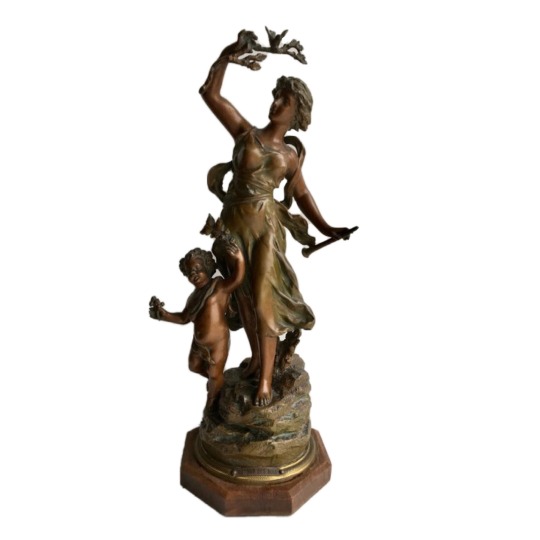
The two windowsill figures of the Art Deco dancers from S1 were replaced by a somewhat similar set of twin statues by Ernest Rancoulet called Retour des Bois (Return from the Woods). Depicting a young woman accompanied by a putto, Aphrodite and Eros, frolicking in a dance through the woods and meadows. This bucolic fantasy with Aphrodite makes some sense when we consider how Aziraphale’s personal love story started (and will presumably end) in a garden, but let’s deep deeper into its protagonists. Or protagonist, actually, because what else can be told about Love itself?
Eros as the god of Desire is usually presented in art as a handsome young man, though in some appearances he is a boy full of mischief, ever in the company of his mother. It is usually under the guidance of Aphrodite when he employs his signature bow and arrows to make mortals and immortals alike to fall in love. His role in myths is mostly complementary, as a catalyst for other mythological figures and their stories, with the notable exception being the myth of Eros and Psyche, the story of how he met and fell in love with his wife.
In short, they are the original star-crossed lovers from entirely separate worlds who meet and fall in love by divine happenstance, only to be separated by Psyche’s family. Convinced by her sisters that her husband is, in fact, a vile winged serpent, Psyche breaks his one rule and the attempt to kill the monster leads her to falling in passionate love with him. Eros flees and Psyche wanders the Earth searching for him and succumbing to a series of impossible tasks reminding of those from the Scarborough Fair ballad or the more modern fairytale about Cinderella. She ultimately fails, but is saved by the healed Eros, granted immortality and the status of his equal, after which they can properly marry with a huge wedding banquet, a real feast of the gods.
In the Christian Middle Ages, the union of Eros and Psyche started to symbolize the temptation and fall of the human soul, driven by the sexual curiosity and lust from the Love’s domain, mirroring the original sin and the expulsion from Eden.
Oh, and their Latin names? Cupid and Anima. C+A.
We’ll get back to them in a minute.

According to unnecessary but extensive research, the two mid-century table lamps standing over the desk were most probably produced in France after another unspecified 19th century sculptor like the example above, although this particular putti design can be also found in the so called Hollywood regency style of the same time period. The putto is holding onto a cornucopia, a classical antiquity symbol of plenty, which then continues to the bulb section.
The cornucopia is an easily recognizable symbol of abundance, fertility and, to lesser extant, peace and good fortune. Since the horn is phallic-shaped, but hollow at the same time, it combines intimate imagery of both male and female character at the same time, which further ties into notions of fertility. In its role as a fertility symbol, the cornucopia is also usually associated with Demeter, whose small statue is also standing on the bookshop’s counter. Which seems like a recurring theme.

I saw multiple theories about Aziraphale’s centerpiece, but somehow the truth proved to be much less significant than previously thought. This roman soldier, possibly a centurion, driving his two horses in a highly decorated chariot is made from a marble powder resin composite and takes the most visible place in the Eastern part of the bookshop even though it’s seemingly one of the newest additions to Aziraphale’s collection — its author, Lorenzo Toni, was born in 1938 and became a sculpture master by the 1970s.
At first glance, the parallel to the Marly Horses seems obvious and we could leave it basically at what was written recently on Crowley and Aziraphale’s dynamics. But here is where instead of commenting on the antique sculpture that seems to be the inspiration behind this piece or the many intricacies of Roman chariot racing I’ll do something completely unhinged — i.e., play my Greek philosophy card.
In the dialogue "Phaedrus ”, Plato presents the allegory of the chariot to explain the tripartite nature of the human soul or — you guessed it — psyche. The charioteer is the man’s Reason, the rational part that loves truth and knowledge, which should rule over the other parts of the soul through the use of logic. One of the horses, the white one, is man’s Spirit, a motivated part which seeks glory, honor, recognition and victory. The second horse, the black one, represents man’s Appetite — an ever so hungry part which desires food, drink, material wealth and physical intimacy.
And the fun part? This triad is established to analyze the madness of love. In a classical Greek context, that is not between a man and a woman, but erastes and eromenos:
The charioteer is filled with warmth and desire as he gazes into the eyes of the one he loves. The good horse is controlled by its sense of shame, but the bad horse, overcome with desire, does everything it can to go up to the boy and suggest to it the pleasures of sex. The bad horse eventually wears out its charioteer and partner, and drags them towards the boy; yet when the charioteer looks into the boy's face, his memory is carried back to the sight of the forms of beauty and self-control he had with the gods, and pulls back violently on the reins. As this occurs over and over, the bad horse eventually becomes obedient and finally dies of fright when seeing the boy's face, allowing the lover's soul to follow the boy in reverence and awe. The lover now pursues the boy. As he gets closer to his quarry, and the love is reciprocated, the opportunity for sexual contact again presents itself. If the lover and beloved surpass this desire they have won the "true Olympic Contests"; it is the perfect combination of human self-control and divine madness, and after death, their souls return to heaven.
And such a perfect combination of the motifs already introduced to us by the two Eros statues and the Head of the Victorious Athlete.

Aziraphale might be a titular Companion to Owls (or, to be precise, the companion to one particular Nite Owl), but he had also made sure to have at least one owl keeping him company. And of course, the owl of Athena (who was interestingly both a bird and a snake goddess) is an absolutely conclusion here as the universal symbol of wisdom and knowledge in the Western culture, but it can’t be that easy, right?
In the Bible, you'll find that owls often symbolize something unclean and forbidden, as well as desolation, loneliness, and destruction. This symbolic significance is pointed out in Leviticus 11:16-17 and Deuteronomy 14:11-17 where owls are mentioned among the birds not to be eaten. Owls were considered unclean most likely because they are predatory creatures who eat raw flesh with the blood still in it, and that was an even bigger food safety concern for the biblical nomads than to us today.
Owls are also among the wild predators that have long dwelled in the desert lands and abandoned ruins of Egypt and the Holy Land. Both Isaiah and Zephaniah speak of owls nesting in ruined wastelands to paint symbolic images of barrenness, emptiness, and utter desolation. In Psalm 102:3–6, the owl symbolizes the loneliness of the psalmist’s tortured heart:
For my days vanish like smoke; my bones burn like glowing embers. My heart is blighted and withered like grass; I forget to eat my food. In my distress I groan aloud and am reduced to skin and bones. I am like a desert owl, like an owl among the ruins. I lie awake; I have become like a bird alone on a roof. All day long my enemies taunt me; those who rail against me use my name as a curse. For I eat ashes as my food and mingle my drink with tears because of your great wrath, for you have taken me up and thrown me aside. My days are like the evening shadow; I wither away like grass. But you, Lord, sit enthroned forever; your renown endures through all generations.
It’s a devastating, but still beautiful piece that deals with the feeling of utter rejection, the ultimate bad breakup of the relationship between a human and their God. And this… simply didn’t happen between God and Aziraphale, not even during his Job job. The angel had always considered Her love and ineffability as a given, even when the whole Heavenly Host was against him during the Non-Apocalypse. His allegiance stayed with God, not necessarily Her angels. Which brings us yet again to the motion of Crowley as the owl.
The angel and the demon are the companions to each other's loneliness, but Aziraphale’s needs seem significantly bigger than their Arrangement that he even considered a wooden substitute protectively hovering over him 24/7. He seems to be the one who is the loneliest and most rejected.
Oh, and if you think that putting a small bronze statue of a putto with a bronze putto-shaped candleholder right behind it (visible on the filing cabinet in the bottom right corner) is already a stretch, let me show you what’s on the other side of that wall.


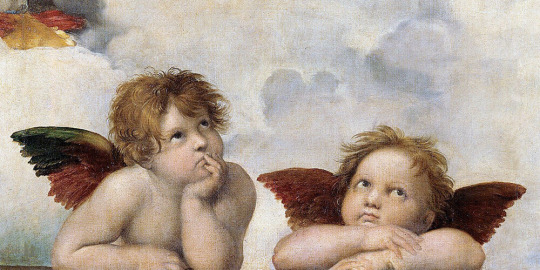
Just like before the bookshop fire, the famous sink in the small backroom is adorned with a perfectly kitschy white plaster sculpture of The Two Cherubs, a small part of a larger painting by Raphael (the painter, not the Archangel) titled Sistine Madonna. In the painting the Madonna, holding Christ Child and flanked by Saint Sixtus and Saint Barbara, stands on clouds before dozens of obscured putti, while two distinctive winged putti rest on their elbows beneath her. with bombastic side eyes and clearly unspoken, but very controversial thoughts about the whole scene and their role in it.
With an attitude like that, there’s no wonder that the putti have inspired some legends. According to one, the original cherubs were children of one of his models they would come in to watch. Struck by their posture, he added them to the painting exactly as he saw them. Another story says that Raphael was inspired by two street urchins looking wistfully into the window of a baker's shop.
The Germans implicitly tied this painting into a legend of their own, "Raphael's Dream." Arising in the last decades of the 18th century, the legend — which made its way into a number of stories and even a play — presents Raphael as receiving a heavenly vision that enabled him to present his divine Madonna. It is claimed the painting has stirred many viewers, and that at the sight of the canvas some were transfixed to a state of religious ecstasy akin to Stendhal Syndrome (including one of Freud's patients).
Their big, seemingly cherubic companion doesn’t seem to have a specific provenance, but what’s left of his limbs might suggest that it could be an infant Jesus as well as another putto. But honestly who knows at this point.
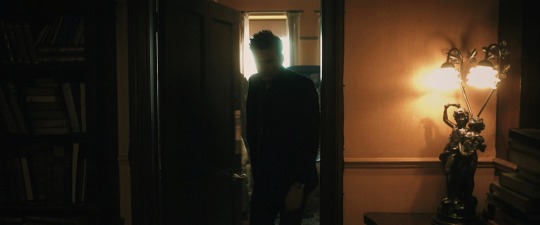

On the other side of the same room, right at the door leading to the big backroom, there are two lamps with Auguste Moreau’s Young Lovers, a bronze sculpture depicting a courting couple on the verge of a physical embrace, holding garlands of roses and hiding under some old vines. Which aligns perfectly with the beloved romcom trope of a rain shelter leading to sudden love realizations, as well as Crowley choosing this part of the bookshop to have a word with his angel in private and then offering his advice on anything related to human love. No wonder that the angel looked at him like that.
This statue carries with it more than one allegorical interpretation, intentional or not. Arguably the most obvious one is the myth of Eros and Psyche, one we already covered in this post. But similarly to his earlier sculpture, Eros also serves here as an allegory for nature and the return to the natural state itself. Like Adam in Eden, he's unclothed and symbolically crowned as a ruler of his domain. Psyche, enamored with his confidence, is about to take her own leap of faith as her fabric restraints fall away. One could say that she's tempted to follow him into nature, deep into the garden of love.
And with that exact thought I will leave you today, dear reader. Through this analysis we learnt many things, among them two significant facts about Aziraphale: firstly, he’s an utter and incorrigible romantic, and secondly, a hoarder. Forget Crowley’s souvenirs — the amount of this angel’s statues is something else. And it isn’t even his hyperfixation!
#yuri is doing her thing#good omens#good omens 2#go2#aziraphale#crowley#c+a#crowley needs a hug#aziraphale is a hoarder#ineffable idiots#ineffable husbands#ineffable divorcés#a. z. fell#a. z. fell & co.#aziraphale’s bookshop#bookshop statues#statues update#set design#the good omens crew is unhinged#raphael#greek mythology#bible fanfiction
129 notes
·
View notes
Text
A Fairy Tale Rabbit Hole

Snow White and the Seven Dwarfs is the movie that it started it all for Disney Animation and it's the most influential fairy tale movie ever. Its tropes and its tone still inspires fairy tale media to this day, either as parodies, or homages.
But what less people know is that Walt Disney was inspired to make this movie because of a peculiar silent movie that he watched when he was a teenager.
That movie was Snow White from 1916. Its writer, Winthrop Ames, adapted it from his own Broadway play. An example of American fairy tale theater.
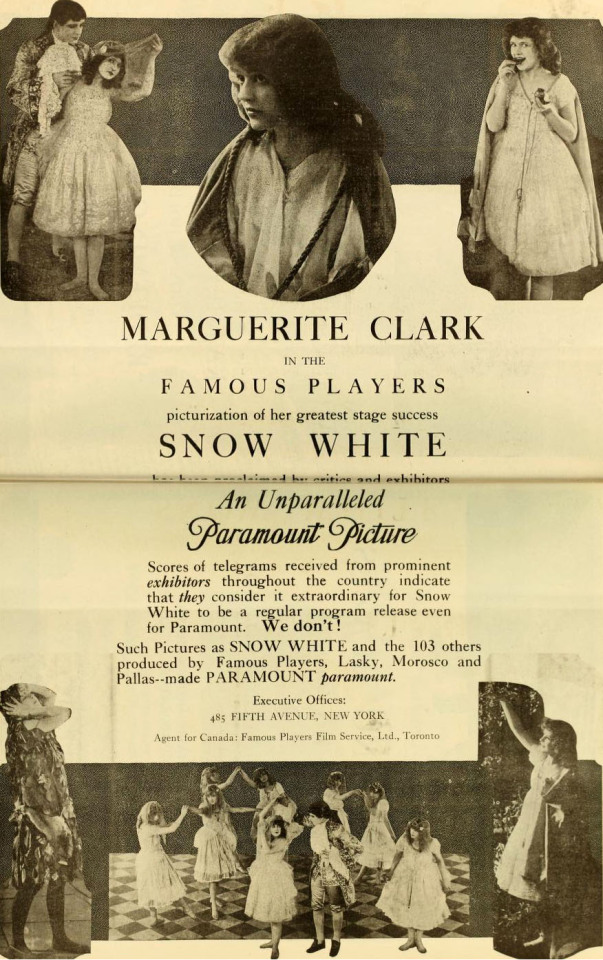
This kept me thinking.
The Wizard of Oz is one of the most iconic fantasy films of all time, and it was made in direct response to Snow White. What people don't know is that the scene where Glinda saves the gang from the deadly poppies with a snowstorm came straight from a fairy tale musical from 1902. It came from The Wizard of Oz, a fairy tale musical "extravaganza", with direct input from L. Frank Baum, only two years after the original novel.

Actually, stage musicals seem to take a slight part in the creation of Oz. The Marvellous Land of Oz, the sequel, seems to be inspired by this stage culture. General Jinjur and her army dresses like chorus girls, Ozma/Tip may be inspired by the crossdressing in children roles, and this was the book's dedication:
"To those excellent good fellows and comedians David C. Montgomery and Frank A. Stone whose clever personations of the Tin Woodman and the Scarecrow have delighted thousands of children throughout the land, this book is gratefully dedicated by THE AUTHOR"
These were actors of the 1902 stage show.
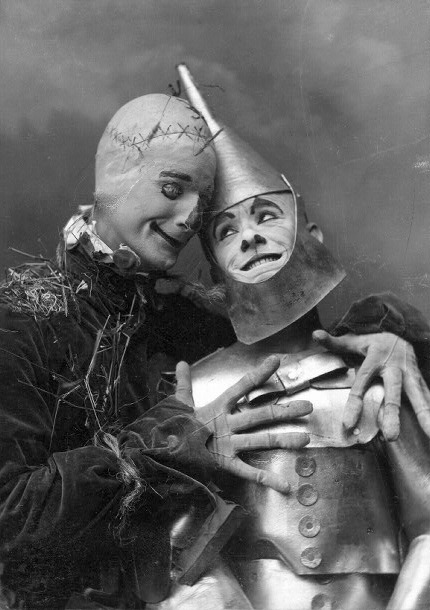
Two years later, on 1904 Peter and Wendy premiered. This play is also one of the most famous children stories ever. Walt Disney himself acted as Peter in a local production of it and Tinkerbell quickly became a mascot for the studio.
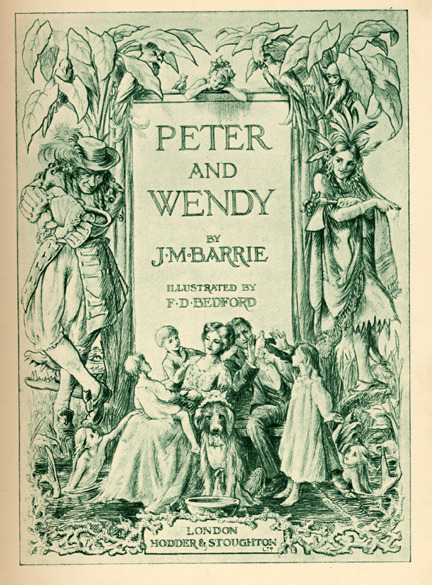
This all led me to think more about fairy tale theater specifically.
Since the ending of the 18th century and through the 19th century, a genre of stage show developed through Europe. It was mostly comedic and light-hearted, mainly inspired by fairy tales, and it was geared towards children and families. It involved lavish fantasy spectacles told through operas, ballets, and what we today would call "musical theater".
It had many different names and variations depending on the country.
On England, it evolved through the pantomimes and it became a Christmas tradition.
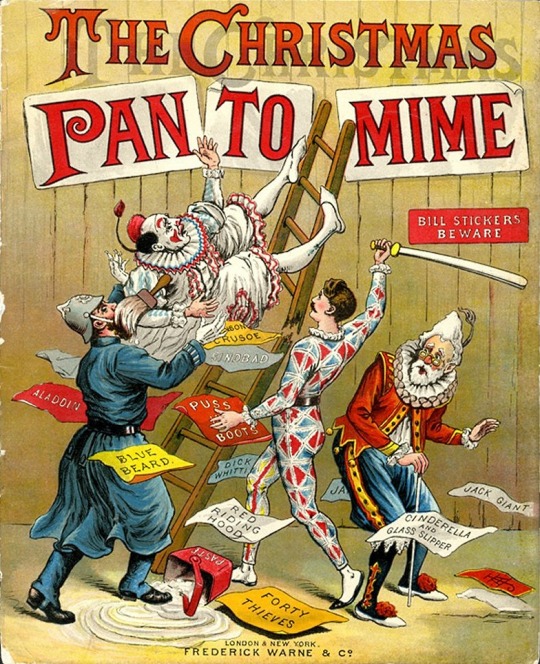
In Russian, it was mainly through ballet, called the ballet-féerie, often considered a lower-class, more commercialized entertainment than traditional ballet. Tchaikovsky's Sleeping Beauty and The Nutcracker are among some of them. Sleeping Beauty would later inspire Disney's telling of the story.
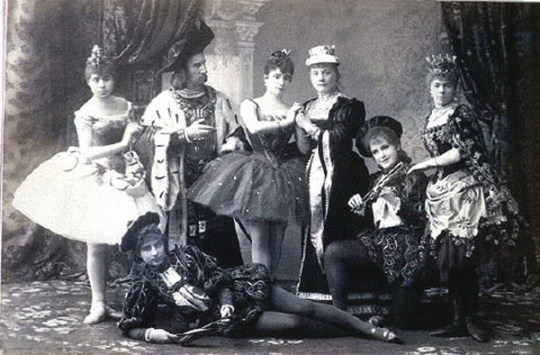
In France they were called Féerie, and it was a mix of music, dancing, pantomime, acrobatics, and stage effects. It influenced the development of burlesque, musical comedy and film.

From Wikipedia:
With his 1899 film version of Cinderella, Georges Méliès brought the féerie into the newly developing world of motion pictures. The féerie quickly became one of film's most popular and lavishly mounted genres in the early years of the twentieth century, with such pioneers as Edwin S. Porter, Cecil Hepworth, Ferdinand Zecca, and Albert Capellani contributing fairy-tale adaptations in the féerie style or filming versions of popular stage féeries like Le Pied de mouton, Les Sept Châteaux du diable, and La Biche au bois. The leader in the genre, however, remained Méliès,[37] who designed many of his major films as féeries and whose work as a whole is intensely suffused with the genre's influence.[38]
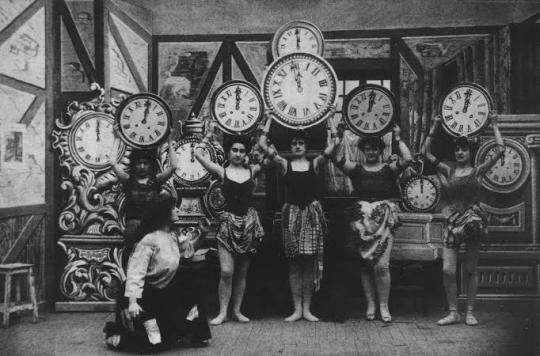
Once you realize a huge chunk of fairy tale media has roots in family friendly stage shows from 19th century, a lot of it started making sense.
The focus on romance, the focus on damsels in distress, prevalence of lighter tones, the everlasting connection to music and dance.
They may be the main reason why some fairy tales are more famous than others. Some became source material for a continuous stream of operas, operettas, musical extravaganzas, ballets, plays, and others simply not.
And besides the Victorian Era storybooks that bowdlerized fairy tales for children, I think this whole genre of the theater was responsible to firmly establish fairy tales as a child friendly media, decades before Disney ever released Snow White to cash in that nostalgia.

If you have something to add or if I just got something wrong, feel free to correct me.
@ariel-seagull-wings @princesssarisa @adarkrainbow @the-blue-fairie @theancientvaleofsoulmaking @natache @tamisdava2 @thealmightyemprex
53 notes
·
View notes
Text


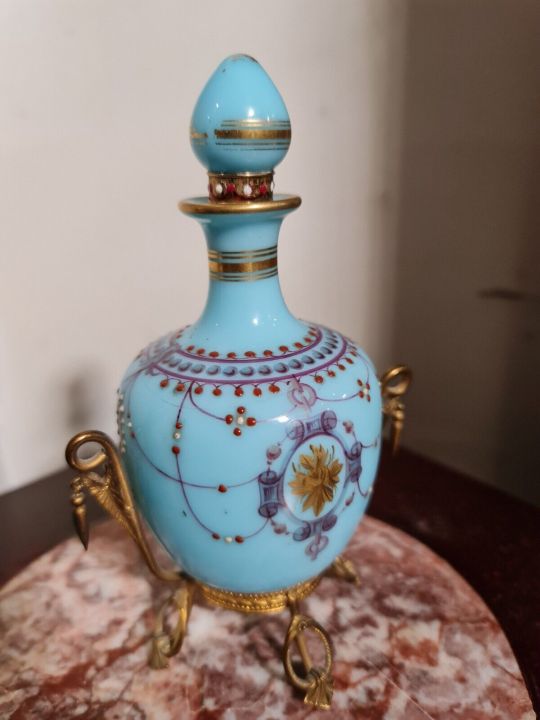
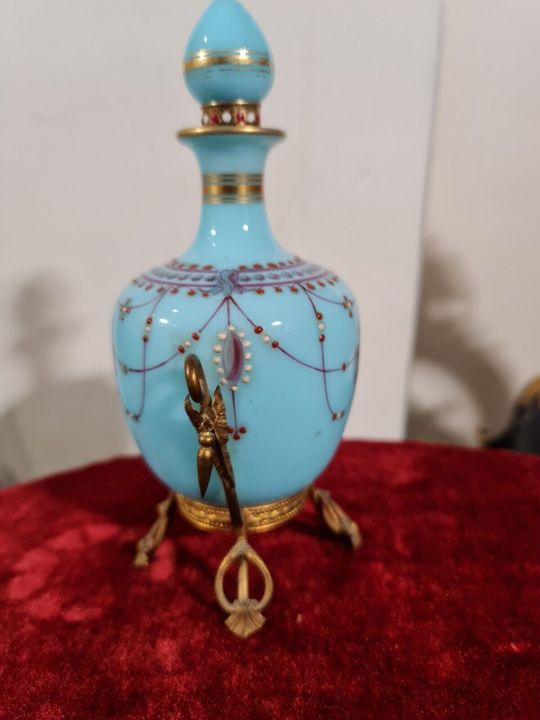

Antique 19th C. Baccarat Blue Opaline Glass Perfume Bottle with Bronze, France ebay thetimemachine11
55 notes
·
View notes
Text

The Great Binge: The Drug-Fuelled “Belle Epoque”
The Belle Époque or La Belle Époque; French for "Beautiful Epoch" is a period of history, usually considered to begin around 1871–1880 and to end with the outbreak of World War I in 1914. It was a period characterized by optimism, peace, economic prosperity, colonial expansion, and technological, scientific, and cultural innovations. In this era of France's cultural and artistic climate (particularly within Paris), the arts markedly flourished, and numerous masterpieces of literature, music, theatre, and visual art gained extensive recognition.

The Bar At Maxim's, Vintage Artwork By Pierre-Victor Galland
The Great Binge refers to the same period spanning 1870 to 1914 in North America. It was coined by modern historian Gradus Protus van der Belt to describe a time when drugs like cocaine, heroin, opium, absinthe, laudanum, and many more were freely available not just from your local pharmacy, tobaconists or the neighbourhood bar, but also from the barbershop, the stationers, and even confectioners.

Morphine by Albert Matignon - 1905

Georges Moreau de Tours - Les Morphinees The Morphine Takers - 1886
Between 1827 and 1842, over 27,000 pounds of opium came into the ports of the United States alone, where the drug found an unexpected distribution network of businessmen, presidential parents, and even Ivy League schools, which all had ties to the Opium trade in the late 19th century.

The Illustrated London News print of the clipper steamship Ly-ee-moon, built for the opium trade, c. 1859
“Princeton’s first large benefactor, John Green, funded his contribution through the opium trade […] Yale University’s infamous Skull and Bone society was funded by the most successful family of opium dealers in America,” reveals Harvard’s magazine, The Crimson, adding that as America’s gateway institution for the drug that soon spread to other Ivy Leagues along the East Coast, “Opium once pervaded campus life at Harvard […] throughout the 1800s, its black smoke kept the university’s veins flowing with green and its faculty and students perpetually dazed.”

The term “pipe dream” actually originates from the opium dens of turn of the century America where people smoking an opium pipe would come up with ideas, theories and fantasies whilst hallucinating.

In 1908, President Roosevelt appointed Hamilton Wright as the first Opium Commissioner in the United States to begin targeting opium dealers. The irony here is that Franklin D. Roosevelt’s grandfather, Warren Delano, was an opium peddler, and his drug trade was responsible for the bulk of the family’s fortune. Roosevelt’s mother, Sara Delano, travelled to Hong Kong with her family to join her opium-trading father in the 1860s.
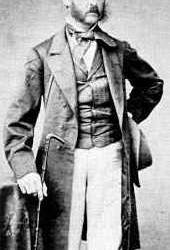
Warren Delano (FDR's grandfather & Opium King)

Sara (FDR's mother) & Philippe Delano in 1864, following their return home from Hong Kong. (Franklin Roosevelt Library)
The crackdown on the Great Binge inevitably began with the signing of the 1912 International Opium Convention to suppress opium smoking and to limit it to medicinal purposes. In the 1920s, in the US, an anti-drug crusade also saw heroin cough drops and cocaine tablets to slowly disappear from stores and bathroom cabinets.
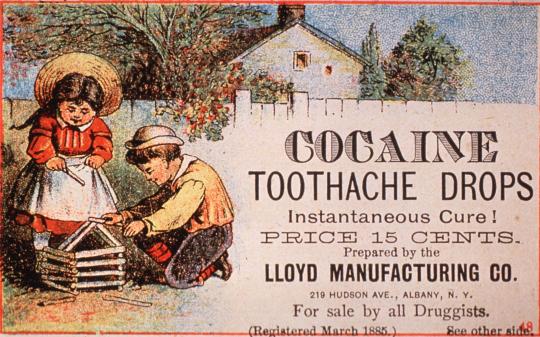
In the 1920s, in the US, an anti-drug crusade also saw heroin cough drops and cocaine tablets to slowly disappear from stores and bathroom cabinets.
During the Great Binge, the most notable drink in circulation was the Vin Mariani, an alcoholic beverage that combined both wine and cocaine.

Angelo Mariani, a French chemist who invented a very popular beverage in 1863.
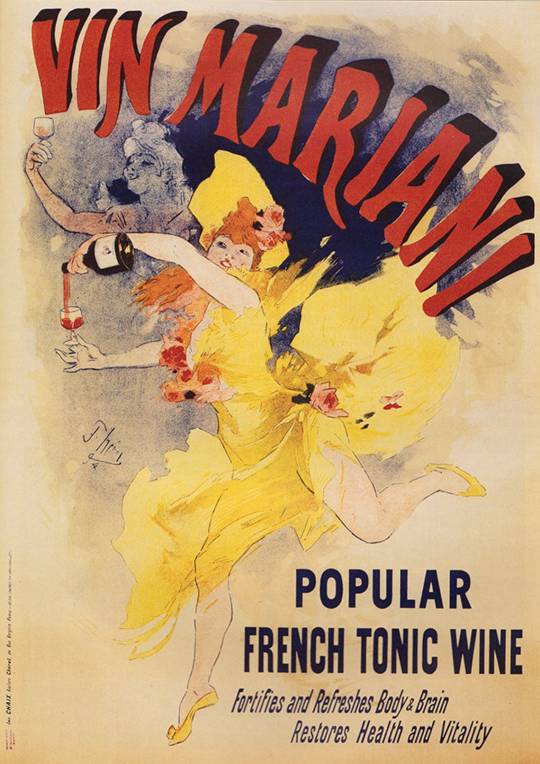
Mariani tonic Wine — lithography by Jules Cheret
The French "Tonic" Wine received endorsements from Pope Leo XIII as well as many of the Belle Epoque’s most famous names, Sarah Bernhardt, Jules Verne and even Queen Victoria were all fans of the drug-infused cocktail.

Pope Leo XIII even allowed his face to be used in Vin Mariani’s marketing campaign. He was very much a brand ambassador, citing that it strengthened him “when prayer was insufficient”.
Mariani's "Tonic" would spent the following century cleaning up its act & rebranding itself to become the world’s most iconic household brand: Coca Cola
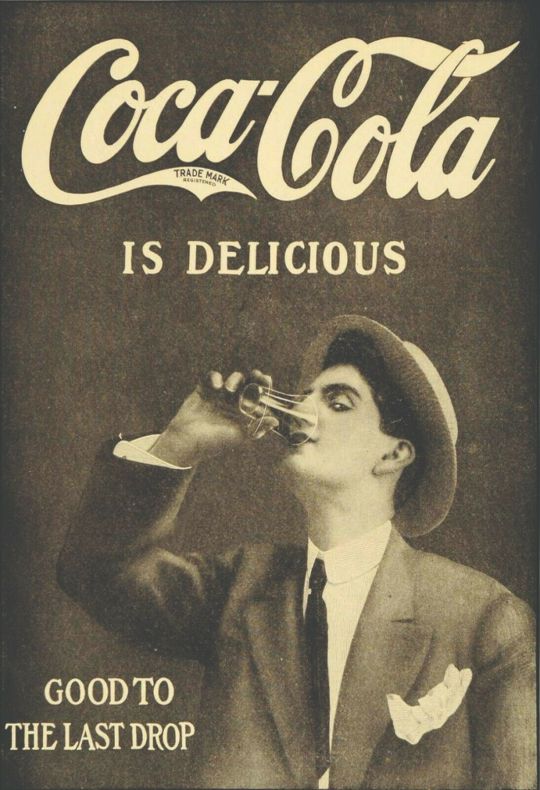
#belle epoque#Beautiful Epoch#paris#Great Binge#cocaine#opium#Morphine#Albert Matignon#Les Morphinees#Georges Moreau de Tours#ivy league schools#Ivy League#Opium trade#princeton#yale#harvard#pipe dream#franklin d. roosevelt#fdr#Warren Delano#Sara Delano#Angelo Mariani#Vin Mariani#Pope Leo XIII#jules verne#queen victoria#coca cola
69 notes
·
View notes
Text
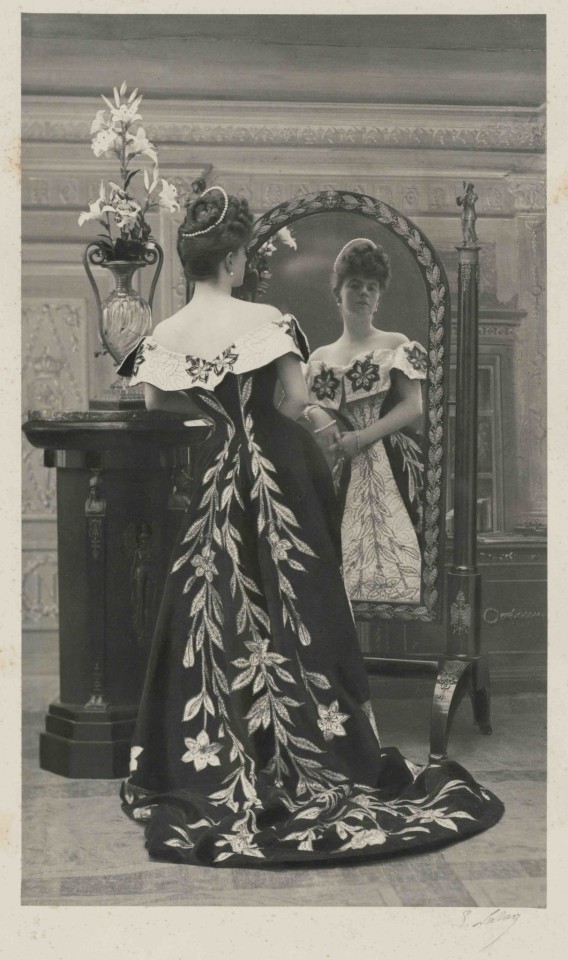

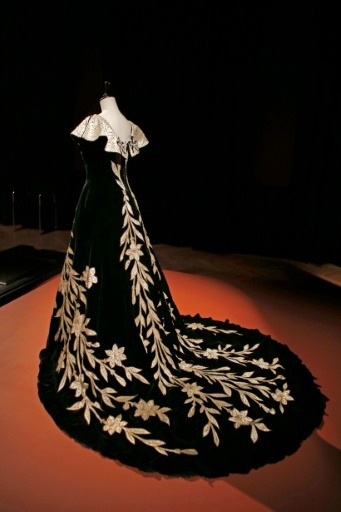


Dress worn by comtesse Greffulhe, née Élisabeth de Caraman-Chimay, designed by Charles Frederick Worth, 1896
#1890s#charles frederick worth#house of worth#19th century#19th c. costume#costume#france#19th c. France#1896#photography
4K notes
·
View notes
Text
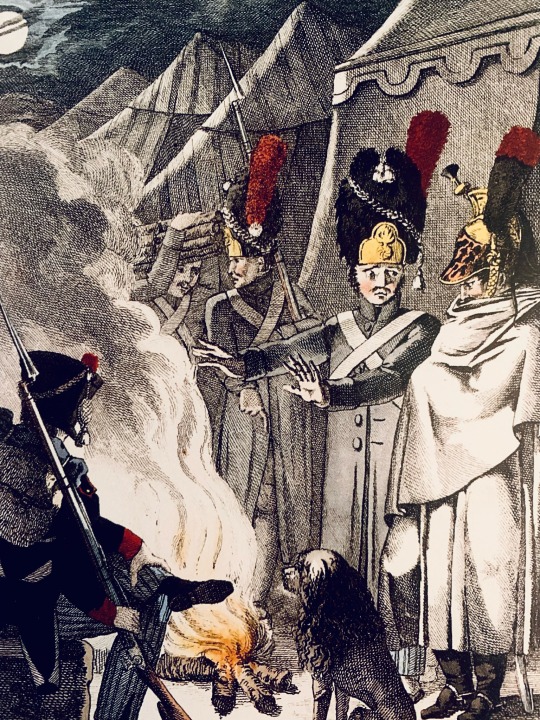
Napoleonic Military Scene - Bivouac
Napoleon’s Army 1807-1814, as Depicted in the Prints of Aaron Martinet, Book by Guy C. Dempsey
#my pics#Aaron Martinet#Martinet#Guy C. Dempsey#Dempsey#napoleon#napoleonic era#napoleonic#napoleon bonaparte#first french empire#Bivouac#french empire#19th century#france#history#1800s#art#print#prints#military#military uniforms#uniforms#campfire
18 notes
·
View notes
Photo
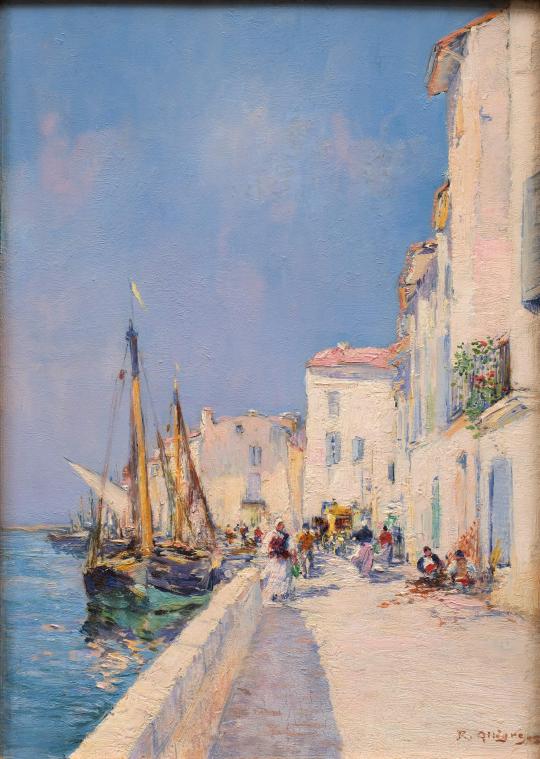
An Animated Quay in Martigues, France, c. 19th Century
Raymond Allègre (French, 1857–1933)
206 notes
·
View notes
Text
Crinoline

A stiff or structured petticoat designed to hold out a woman’s skirt, popular at various times since the mid-19th century. Originally, crinoline described a stiff fabric made of horsehair and cotton or linen which was used to make underskirts and as a dress lining. By the mid-1850s the term crinoline came to be applied to hoopskirts instead of the horsehair petticoats. In form and function these hoop skirts were similar to the 16th- and 17th-century farthingale and to the 18th century panniers. The steel-hooped cage crinoline, first patented in April 1856 by R. C. Milliet in Paris, and by their agent in Britain a few months later, became extremely popular. Alternative materials such as whalebone, cane, and rubber were all used for hoops. At its widest point the crinoline could reach a circumference of up to 6 yards. Eventually the crinoline was replaced by the crinolette and bustle by the early 1870s.
1 note
·
View note
Text



Gonna toss out my Legends ZA starter prediction
1. Snivy is already a French pokemon, or at least represents France where Emboar represented China and Samurott was Japan- these three symbolizing America and particularly NYC as a melting pot. In fact, Serperior is already in Kalos in various paintings and even on a gate to one of the castles.
2. Scorbunny might seem out of the blue (my other choice was Charizard, but I feel that that might be too obvious or overused), but 1. There's plenty of French stories and myths about rabbits, including some for the French Revolution or even some that predate France as a whole, 2. They could easily rework its Gmax form as a variant based on the French Lop Rabbit, and 3. Similarly to Rowlet, Scorbunny comes from a generation prior.
This one however I'm up for changing. I could also see Litten or Blaziken being reworked.
C. Piplup feels pretty obvious, but Empoleon is based on an emperor penguin and the English namesake comes from Emperor Napoleon Bonapart- BUT that's not the only Napoleon leader France had. Paris was "renovated" by Haussman under the comission of Emperor Napoleon III, aka France's first President and last Monarch (the history is pretty ugly, but Pokémon made a game based around the Colonization of Hokaido, soooo-). The question is raised as to how it got to France considering how nobody had a pokedex for Hisui yet around the Meiji era (similar assumed time frame to the renovation of Paris mid 19th century), but it wouldn't be too outlandish considering Alolan Ninetales and Rowlet made it to Hisui.
If I had to guess: Grass/Dragon or dark, Fire/Fairy, and Water/Ice or ghost. In any regard, id say these or the true starters would share sort of a regal or royal theming.
Another question to be had is this: since Megas are coming back, would they get variants? Would they get new megas instead? Or maybe BOTH?
This'll be an interesting topic to follow imo
21 notes
·
View notes